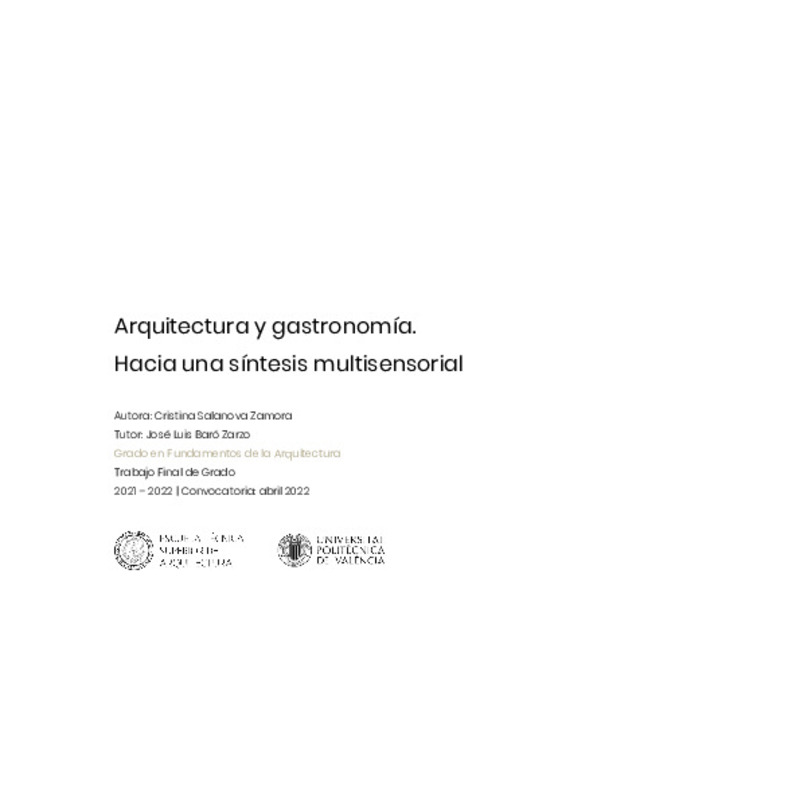|
[ES] La arquitectura sensorial pretende ir más allá de la mera composición formal y transmitir sensaciones al usuario a través de los sentidos. La interacción de la vista, el oído y el tacto han sido objeto de atención en ...[+]
[ES] La arquitectura sensorial pretende ir más allá de la mera composición formal y transmitir sensaciones al usuario a través de los sentidos. La interacción de la vista, el oído y el tacto han sido objeto de atención en arquitectos como Aalto, Zumthor, Holl o Pallasmaa. Sin embargo, la asociación del gusto y el olfato, posiblemente por su mayor dificultad de integración, han sido recursos menos explorados. ¿Es posible concebir un diseño arquitectónico que refleje las cualidades de un determinado tipo de cocina? ¿Cómo armonizar unos componentes tectónicos que nos envuelven con unas sensaciones efímeras que se ingieren? ¿Se puede alcanzar realmente una experiencia donde se integren los cinco sentidos?
La metodología empleada se desarrolla en tres fases. La primera trata de indagar en las bases teóricas de la fenomenología de la experiencia y sus peculiaridades en el ámbito de la arquitectura y gastronomía; la segunda fase aborda el estudio de una serie de casos prácticos de espacios destinados a la gastronomía; mientras que la tercera y última se orienta a sintetizar y concluir los recursos arquitectónicos que contribuyen a desarrollar una más íntima relación entre arquitectura y gastronomía capaz de hacer gozar al usuario de experiencias multisensoriales plenas.
[-]
[EN] Sensorial architecture aims to go beyond mere formal composition and transmit sensations to the user through the senses. The interaction of sight, hearing and touch have been the object of attention in architects such ...[+]
[EN] Sensorial architecture aims to go beyond mere formal composition and transmit sensations to the user through the senses. The interaction of sight, hearing and touch have been the object of attention in architects such as Aalto, Zumthor, Holl or Pallasmaa. However, the association of taste and smell, possibly because of their greater difficulty of integration, have been less explored resources. Is it possible to come up with an architectural design that reflects the qualities of a certain type of cuisine? How can we harmonize tectonic components that envelop us with ephemeral sensations that are ingested? Can we really achieve an experience where all five senses are integrated?
The methodology used is developed in three stages. The first one tries to investigate the theoretical bases of the phenomenology of experience and its peculiarities in the field of architecture and gastronomy; the second stage deals with the study of a series of practical cases of spaces destined to gastronomy; while the third and last one is oriented to synthesize and conclude the architectural resources that contribute to develop a more intimate relationship between architecture and gastronomy capable of making the user enjoy full multisensory experiences.
[-]
|







